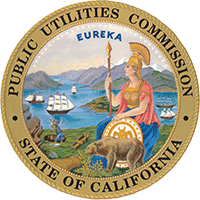Energy Efficiency
California has led the nation in energy efficiency programs since the 1970s. Due to the state’s long standing efficiency programs, per capita energy use has remained flat, while the rest of the US has increased by about 33 percent.
The CPUC regulates investor-owned utility (IOU) ratepayer-funded energy efficiency programs. The CPUC works with the IOUs, other portfolio administrators, and vendors to develop programs and measures to transform technology markets within California using ratepayer funds.
- CPUC's role in regulating Energy Efficiency
- 2022 EE Programs Results Summary and 2022 Look Ahead
Proceeding Information
- Rulemaking R.25-04-010 - The new Energy Efficiency proceeding for oversight of energy efficiency portfolios, policies, and evaluation.
- Rulemaking R.13-11-005 - Recently closed Energy Efficiency a proceeding.
- Application A.22-02-005 et al. - Applications from nine EE Portfolio Administrators requesting approval of strategies, programs and budgets for 2024-2031.
- Major Recent Decisions:
- D.25-08-034: Energy Efficiency Goals for 2025-2037
- D.23-08-005: Energy Efficiency Goals for 2024-2035
- D.23-06-055: Authorization of Energy Efficiency Strategies, Budgets, and Portfolios for 2024-2031
- D.23-04-035: (VEA)- Viable Electric Alternative Decision
- D.21-05-031: Established Total System Benefit (TSB) as the goals metric and assesses energy efficiency potential and goals policy decision and modification of portfolio approval and oversight process.
- D.19-12-021: Frameworks for Energy Efficiency Regional Energy Networks and Market Transformation
- For more proceeding information, see Energy Efficiency Procurement and Solicitations
- Portfolio Administrator-Filed Reports
- Rolling Portfolio Program Guidance
- Links to Program Implementers
- Energy Efficiency Proceeding Activity
- Publications, Evaluations, and Reports
Information for Consumers
If you have been contacted by a CPUC evaluation contractor and wish to verify that the request is legitimate, click this link.
- Energy Upgrade California - Learn how you can save energy, money, and be more comfortable in your home
- Flex Alerts - Help California save energy when it’s needed the most
- New Vendor Inquiries - IOU processes for considering new energy efficiency technology and program ideas
- Income Qualified Assistance Programs - Assistance for qualified households to save energy and reduce monthly bills.
Energy Efficiency Programs and Policy Initiatives
(PDF Downloads)
- Agricultural
- Building and Appliance Codes and Standards
- Commercial
- Financing
- Fuel Substitution
- Lighting
- Heating, Ventilation, and Air Conditioning (HVAC)
- Emerging Technologies
- Marketing, Education, and Outreach
- Industrial
- Integrated Demand Side Management
- Workforce Education and Training
- Government Partnerships
- Regional Energy Networks and Community Choice Aggregators
- Residential
- Shareholder Incentive Mechanism
- Water-Energy Nexus
Quick Links to Energy Efficiency Program Tools and Pages
- WHPA Research Library
- Decision 18-05-041 - Addressing Energy Efficiency Business Plans
- Adopting EE Savings Goals for 2018 -2030
- Ex Ante Review - Process estimates the potential energy savings for an energy efficient measure before it is installed based on predictions of typical operating conditions and baseline usage.
- Custom Projects Review Guidance Documents - Provides details on the Commission's policies and procedures to be utilized in the development of ex ante values for custom projects/measures.
- CA Energy Efficiency Evaluation Protocols – Direction on how programs are evaluated
- California Energy Efficiency Statistics – Repository of utility-submitted reports to CPUC
- CA Measurement Advisory Council (CALMAC) - Library of program evaluation and research reports on EE and other clean energy programs
- CPUC Energy Efficiency Policy Manual – Compendium of policy rules for implementation of energy efficiency programs
- Database for Energy Efficiency Resources - CPUC adopted energy savings parameter values for common and established measures
- Energy Efficiency Baselines - Information and Workshops regarding existing baselines and AB 802 implementation
- Evaluation, Measurement and Verification (EM&V) – Information and Resources on CPUC EM&V
- Cost Effectiveness Analysis - Provides information on cost-effectiveness analysis for all demand-side resources
- "E3" Cost Effectiveness Calculators – Computes cost-effectiveness of measures and programs Standard Practice Manual (SPM) –Manual for determining cost effectiveness of demand-side management programs
- Energy Efficiency Goals and Potential Studies - A comprehensive assessment of energy savings potential Energy Efficiency Strategic Plan - A single roadmap to achieve maximum energy savings across all major group and sectors in California.
- Emerging Technologies Coordinating Council - provides a collaborative forum to exchange information on opportunities and results from Emerging Technologies activities
- Ideation Process - guidelines to develop pilots and other similar projects in collaboration with Commission staff and to guide staff review ; this is process is not yet final
- Links to utilities, government agencies, and other organizations working on EE
- Water-Energy Nexus
- Energy Data Access Committee (EDAC)
- Zero Net Energy- Resources and Information regarding the CPUC's role in implementing California's Zero Net Energy policy goals.
